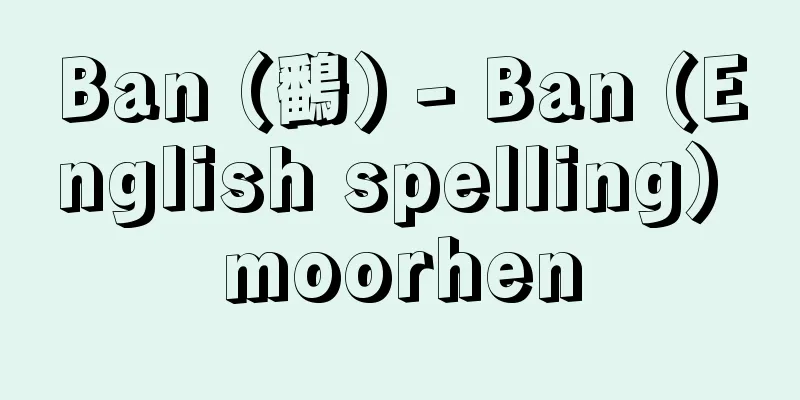Shamenchi Dance - Shamenchi Dance

|
A type of small song and dance. It is danced at the October festival of Akimoto Shrine (Yase Akimoto-cho, Sakyo Ward) in Kyoto City (the day before sports). The name "Kanmenji-odori" (shakenji dance) comes from the fact that when Emperor Godaigo made a secret visit to Mount Hiei, he was granted an exemption from land tax duties thanks to the efforts of the local Yase-no-doji, and this custom continued until a dispute arose between Emperor Godaigo and Mount Hiei in 1707 (the 4th year of the Hoei era), and the exemption was about to be lost, but was saved by the decision of the senior councilor Akimoto Tajima no Kami Takatomo (1649-1714), and as a sign of gratitude, Akimoto Shrine was built and the dance was dedicated to him. Eight cut glass lanterns with openwork carved patterns made by young men from the four Yase neighborhoods are lit in the evening, and a boy dressed as a woman wears them on his head and parades through the temple grounds. Around ten girls wearing flower hats, long-sleeved kimonos, hand guards and leggings follow, carrying lanterns. On a temporary stage within the temple grounds, the girls dance to the beat of a wooden clapper to three songs, the Shiokumi Dance, the Hanatsumi Dance and the Tsushima Dance, and after each song they rotate the lanterns around the temple grounds. In the past, other dances included the Gosho Dance, Shiraito Dance, Shinobi Dance and Cha-tsumi Dance. [Hidezaburo Hagiwara] Source: Shogakukan Encyclopedia Nipponica About Encyclopedia Nipponica Information | Legend |
|
小歌踊の一種。京都市の秋元(あきもと)神社(左京区八瀬(やせ)秋元町)の10月の祭りに踊られる(スポーツの前日)。赦免地踊の名は、後醍醐(ごだいご)天皇が比叡山(ひえいざん)潜幸のおり、当地の八瀬童子が尽力した功により地租所役免除の恩典を受け、その慣習が続いていたところ、1707年(宝永4)に至って叡山との間に争いがおこり免租の特権を失おうとしたのを老中秋元但馬守喬知(たじまのかみたかとも)(1649―1714)の裁断で救われ、そのお礼の意味で秋元神社を建立し踊りを献じたことに由来するという。八瀬4か町内の青年がつくった透(すかし)彫り絵模様の切子灯籠(きりことうろう)8個に夕刻火を入れ、女装した少年が頭にこれをいただき境内に練り込む。これに花笠(はながさ)、振袖(ふりそで)、手甲脚絆(てっこうきゃはん)の少女10人ばかりが提灯(ちょうちん)を持ち従う。境内の仮舞台で少女たちが「汐汲(しおくみ)踊」「花摘(はなつみ)踊」「津島踊」の3曲を音頭取りの拍子木にあわせて踊り、1曲すむごとに境内に灯籠を回す。以前は「御所の踊」「白糸」「忍び踊」「茶摘踊」なども踊られた。 [萩原秀三郎] 出典 小学館 日本大百科全書(ニッポニカ)日本大百科全書(ニッポニカ)について 情報 | 凡例 |
<<: Slope wind - shamenfuu (English spelling)
Recommend
Apostasy - Greek word apostasia
Abandoning one's previous faith, either volun...
Tube ball - Kudatama
A cylindrical bamboo-shaped bead, used mainly as ...
Nauru (English spelling) Republic of Nauru
An island nation located about 40 km south of the...
Yoshitsune Senbonzakura
A joruri gidayu (Japanese traditional puppet thea...
Rhododendron scabrum (English spelling) Rhododendronscabrum
…[Yoshiharu Iijima]. … *Some of the terminology t...
Nod
It is a kind of spirit summoning and fortune tell...
Extremely silly and clever
1363-1452 A monk from the Muromachi period. Born ...
Uranium deposit - Urankosho (English spelling)
A deposit that produces uranium minerals. Because...
Sentimentalism - Sentimentalism
Generally translated as "sentimentalism,&quo...
Haplogynae
…The Ecribellatae are divided into two groups, th...
Moraea spathacea (English spelling) Moraea spathacea
…[Tetsuichi Yahara]. … *Some of the terminology t...
Sarmatian culture (English spelling)
A nomadic culture that spread from the Black Sea ...
thunder
…This type of discharge is called a spark dischar...
Gangwon Province
This province occupies the central part of the eas...
mitra
...High-ranking persons wore a tiara, a high crow...









